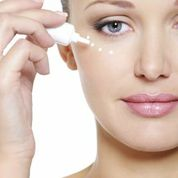 Topical creams and lotions intended to treat the signs of aging in the face are a multi-billion dollar global industry. There is not a department store, drug store, or cosmetics store in the U.S. that does not sell a myriad of these products. These products’ price points range as wide as the claims to their effects. In addition, there are topicals that are not available over-the-counter and must be prescribed or dispensed by a physician. These tend to be more effective than their non-prescription counterparts, however, they are often more costly and because they require examination by a physician are not as easy to obtain. Within the topicals category of facial rejuvenation, the most popular applications are wrinkle reduction and pigment reduction (age or liver spots).
Topical creams and lotions intended to treat the signs of aging in the face are a multi-billion dollar global industry. There is not a department store, drug store, or cosmetics store in the U.S. that does not sell a myriad of these products. These products’ price points range as wide as the claims to their effects. In addition, there are topicals that are not available over-the-counter and must be prescribed or dispensed by a physician. These tend to be more effective than their non-prescription counterparts, however, they are often more costly and because they require examination by a physician are not as easy to obtain. Within the topicals category of facial rejuvenation, the most popular applications are wrinkle reduction and pigment reduction (age or liver spots).
Many topicals contain retinoids (like Retin A). While originally used to treat acne, these forms of vitamin A are primarily used for the treatment of photo-aging. Photo-aging of skin is caused by exposure to the sun’s ultraviolet light. Some signs of photo-aged skin are age or “liver spots.” Prolonged exposure to UV light from the sun will also cause wrinkles, dryness, broken blood vessels in the face, sagging skin, and a leathery appearance. The use of topicals containing retinoids, especially those containing tretinoin, which is prescription strength retinoid, have been proven to help the appearance of aged and photo-aged skin. Wrinkles and fine lines are reduced, complexion is improved, and there is a decrease in the appearance of age spots.
The second most popular active ingredient in topicals is hydroquinone. Hydroquinone is used specifically to treat age spots caused by photo-aging. Unlike retinoids, hydroquinone does not reduce wrinkles. Products containing hydroquinone are sold both over the counter and through physicians, with the physician-dispensed versions containing a higher percentage of the ingredient.
Alpha hydroxy acids are a group of acids that act to break down and exfoliate the top layer of skin. These are very popular in over-the-counter products, but are also present in some physician-dispensed topicals.
Hyaluronic acid is a sugar molecule found naturally in our skin. Products that contain hyaluronic acid increase the skin’s ability to hold moisture. This gives the skin a fresh, youthful look; therefore, this ingredient is commonly used in combination with many of the others active ingredients we outlined above. With this particular ingredient, not all forms are equal – the purity varies and therefore so will the effect. This is where doing some research and sticking with brands that are known to use higher quality hyaluronic acid is key to getting the best bang for your buck.
